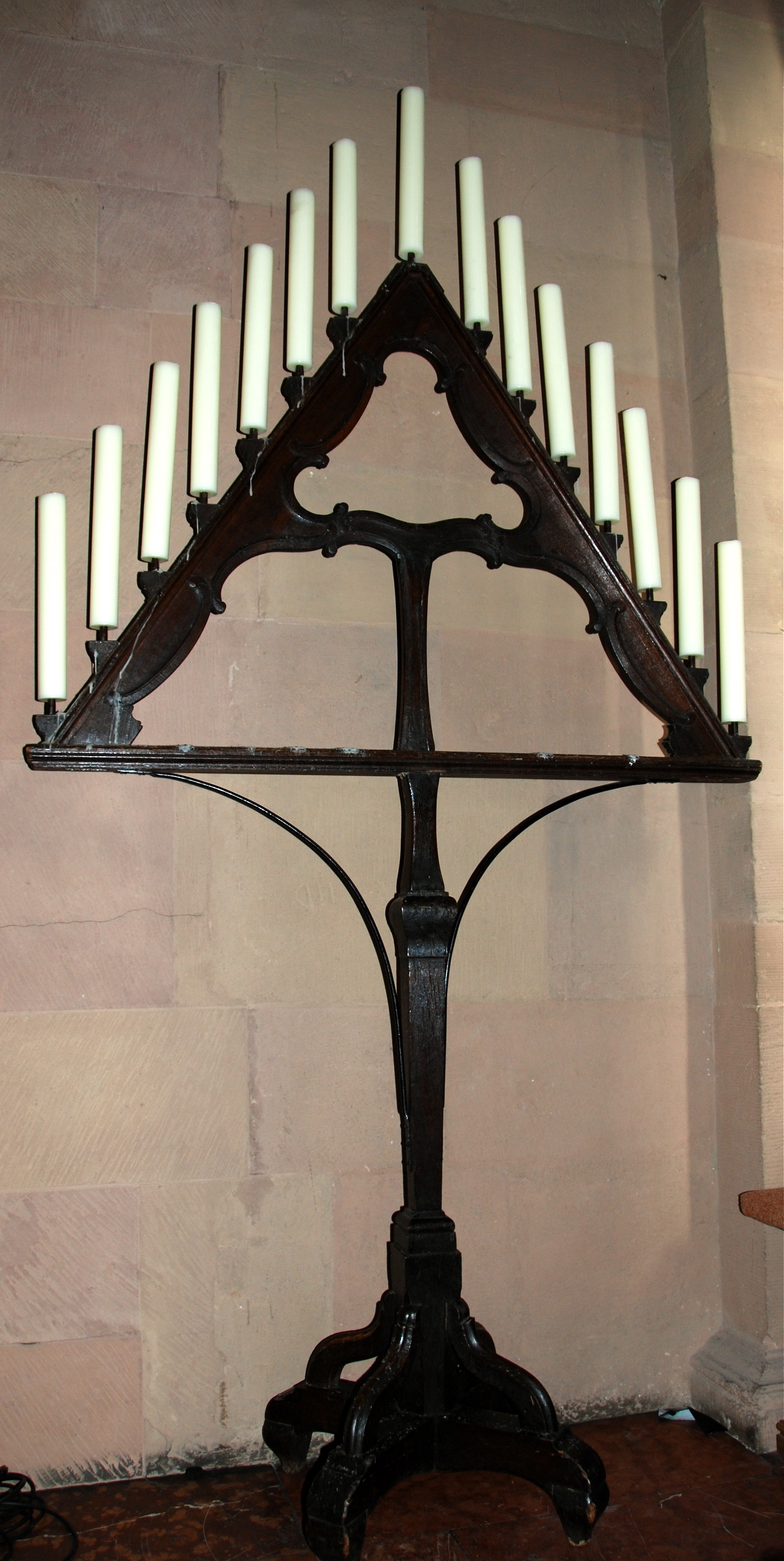 |
| Tenebrae Hearse |
I went to Tenebrae last night at the Dominican House of Studies. If you’re not familiar, it’s a beautiful way of reflecting upon the death of Christ. Here’s how Wikipedia explains it:
The principal Tenebrae ceremony is the gradual extinguishing of candles upon a stand in the sanctuary called a hearse.[2] Eventually the Roman Rite settled on fifteen candles, one of which is extinguished after each of the nine psalms of Matins and the five of Lauds, gradually reducing the lighting throughout the service. The six altar candles are put out during the Benedictus, and then any remaining lights in the church. The last candle is hidden beneath the altar, ending the service in total darkness. The strepitus (Latin for “great noise”), made by slamming a book shut, banging a hymnal or breviary against the pew, or stomping on the floor, symbolizes the earthquake that followed Christ’s death, although it may have originated as a simple signal to depart.[3] Following the great noise, the candle which had been hidden from view is returned to the top of the hearse, signifying the return of Christ to the world with the Resurrection, and all depart in silence.
It was packed, so my friends and I were out in the hallway (and we’d gotten there early, too!), but it was beautiful nonetheless. The extinguishing of the candles is a reminder of the dying of Christ, as well as the darkness that the earth was plunged into upon His Death (Matthew 27:45; Mark 15:33; Luke 23:44).
The strepitus is really quite startling: there’s been all of this beautiful chant, and you suddenly find yourself in darkness, and there’s a cacophonous roar of what sounds like someone banging on a trashcan. I captured this video shortly after the strepitus, as the monks pray in darkness:
By the time we left, you could hear them singing from outside. If nothing else, I think that the two videos capture the difference in how the Dominicans and Franciscans worshiped. But ways of celebrating Tenebrae are really quite beautiful.
